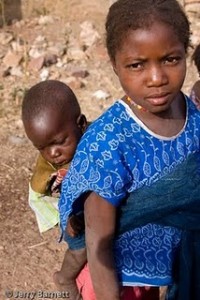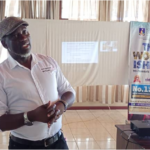The issue of money and aid work
Published on May 23, 2011 at 10:28 AM by FACE OF MALAWI
 Here is a small peek at a huge frustration that I never considered I would have to face almost daily:
Here is a small peek at a huge frustration that I never considered I would have to face almost daily:
A little while ago I visited a neighboring village to talk with the village’s community based organization, the chiefs, the people and I see one clearly defined problem: no access to clean water for miles.
I discuss the issue with my neighbors, my boss, my colleagues, my friends, my family.
And I’ll take one example as illustration of how I use the advice I’m given. My mother points me to Charitywater.org, a non-profit which donates money to water projects that do exactly what I’m looking to do. The website is really well done, the cause is simple, the whole concept of “charity: water” is trendy. So I look at how they work – send money to partners who actually do the projects. OK, fair enough. I look up all the partners and find one operating in Malawi, Water for People. Again, well-organized website with a catchy concept. Then, I check out where they work: only in and around Blantyre, Malawi’s largest city. That’s better than most of the time when the implementing partner doesn’t even necessarily work on the project that it’s receiving funds to do. Like Concern Worldwide, another charity water partner that does mostly HIVAIDS projects, not water.
Not to say that the cities don’t need the help or that HIVAIDS money indirectly coming from Charity Water isn’t going to good use, it’s just the nature of trying to get work done here. Nothing is easy or straight forward, no money is used cleanly, the hierarchy and flow of how donations get to projects is so incredibly convoluted and complicated, and I would bet that it’s honestly impossible to track.
My frustration is simply: funding is always difficult, yet there seem to always be plenty of funders with tons of money who are working on the same goals that I have. Why is connection so difficult?
Or even worse: I find an organization I like, let’s say Kiva.org and want to make the connection between their goals and my village. It’s absolutely impossible. And not only impossible, but after researching, I don’t even know if I want to support Kiva at all anymore. Kiva gives the money you donate to a local lending agency that DOES charge interest (usually at LEAST 20 or 30%). So when you lend a no interest loan, you’re actually giving it to an agency that puts incredible pressure on the recipients, the real people who need the capital. BUT that doesn’t mean Kiva is evil. Capital is short, even for local lending agencies, and it does increase awareness and make us feel good. Just be careful about calling microlending, and especially through Kiva, a magic bullet solution, see this article.
And I’m not saying don’t donate to Kiva or Charity Water, just make sure you’re keeping yourself educated about where your money is actually going. The complex network of donors, implementers, NGOs, non-profits, parent and partner organizations is complicated and not easy to sort through. It’s so much easier to see the face of a Bolivian shop owner on Kiva’s website, read the back story, and click “Lend 25$,” but I just want to make sure that you are not cheating yourself of knowing what’s behind the whole process.
And maybe I’m just burnt out of trying to find funding sources and dealing with big NGOs with big plans. Maybe I’m just getting tired of asking my boss for help and finding out after so many meetings, emails, and research that the partner actually have no way of helping me even though my project and their goals are a perfect match. Maybe the illusion of how aid works is still a sore spot for me. Maybe I should just fund small projects myself and forget everyone else.
About Jackie
Welcome to my Peace Corps journal! I am headed to Malawi next spring – I leave for training on February 26, 2010. I will be working on community natural resources management, though I don’t know my exact project yet. I am so excited to share the stories, pictures, and videos of my adventures in ‘The Warm Heart of Africa!’


